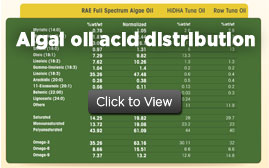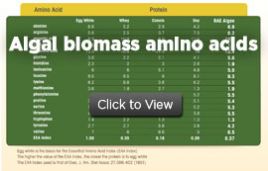About Renewable Algal Energy Technology
To convert algae into valuable products, RAE’s intellectual property portfolio includes patent applications, trade secrets and technical know-how that provide broad and dominant protection for every step of this process.
To protect the environment, RAE has focused on native algal species that are not genetically modified. Ocean water is the preferred source of water for algal growth, but various sources of water can be used. To preserve RAE’s pristine algal aquaculture, our processes do not include the use of pesticides, herbicides and other harmful chemicals. CO2 is removed directly from the atmosphere by the algae, so that RAE’s products are literally made from recycled carbon dioxide!
Although RAE has developed technology for open pond systems, the company’s proprietary harvesting and extraction technology is equally applicable to other aquaculture systems.
RAE has developed breakthrough algae harvesting and lipid recovery technology that has undergone more than two decades of process improvement and has been operating in the current design mode for more than two-and-a-half years. The technology is scalable, and RAE team members are experienced in the design and operation of equipment that will be used for the largest scales of biofuel production.
RAE’s technology offers a sustainable alternative to other forms of agriculture.






RAE uses native algal species to avoid the risk of releasing a modified algal strain.
Carbon dioxide is captured directly from the atmosphere.
RAE’s technology integrates effectively with shrimp aquaculture so that their effluent, which is traditionally discharged directly into the ocean (as shown here), can be productively used for the production of algae.
RAE uses no pesticides or herbicides for algae cultivation.
RAE does not require the use of arable land.
RAE can use ocean water instead of precious fresh water for algae production.

RAE’s omega-3 rich algal oil requires significantly less cropland than do other oilseed crops [see Figure 1 and Figure 2]. Although RAE’s algal oil is the source of omega-3 fatty acids in fish and krill sources, it does not deplete food from the marine life cycle.

RAE’s algal protein is sustainably produced from three perspectives: no fresh water usage, no arable cropland use, and high productivity per acre – when compared to soy and other sources, as reported by Solae™.

